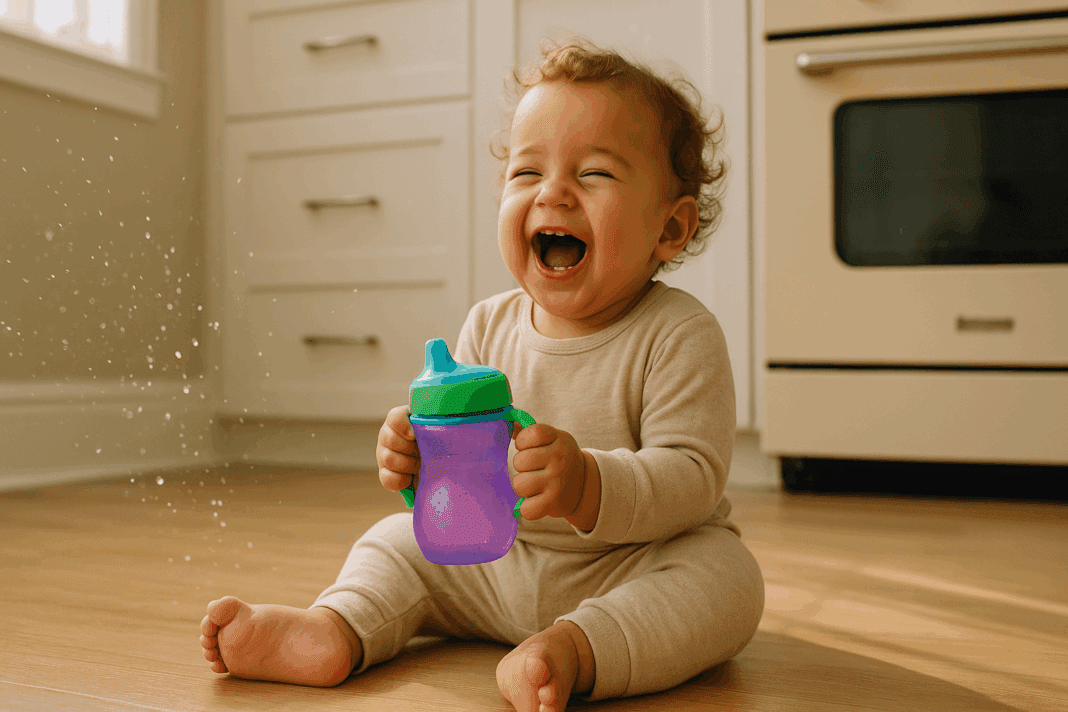In the early stages of childhood, hydration is a foundational pillar of healthy growth and development. Ensuring that children have access to fluids throughout the day is not merely about quenching thirst; it directly supports digestion, cognitive function, body temperature regulation, and overall well-being. Yet, keeping young children consistently hydrated poses its own challenges, especially as they transition from bottles to cups. Among the many solutions parents explore, the leak proof sippy cup stands out as an essential tool. Not only does it help minimize messes, but it also encourages children to develop independent drinking skills without sacrificing safety or convenience. For parents navigating the vast world of toddler drinkware, understanding how to choose the right sippy cup can make a world of difference for their child’s hydration habits and long-term nutritional health.
You may also like: The Ultimate Guide to Choosing the Best Sippy Cup for Healthy Hydration and Growing Kids
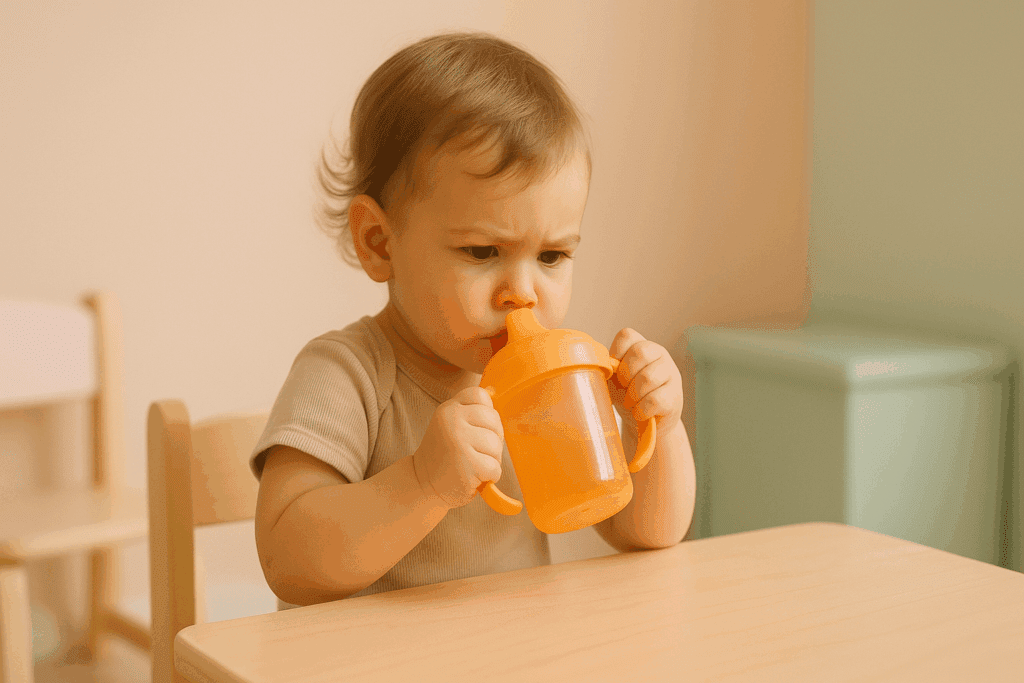
Why Sippy Cups Matter for Child Development and Nutrition
The journey from breastfeeding or bottle-feeding to drinking from an open cup marks a critical developmental milestone in a child’s life. This transition not only teaches self-regulation and coordination but also plays a significant role in forming healthy hydration habits. When children are provided with the appropriate tools, such as a no spill sippy cup, they are more likely to stay hydrated throughout the day without the common frustrations that come with spills, overflows, or choking hazards. These features make the process of drinking safer and more appealing, especially when children are just beginning to grasp new motor skills.
From a nutritional standpoint, adequate hydration ensures that the body’s metabolic processes run smoothly. It assists with nutrient absorption and supports the elimination of waste, making it indispensable for growing children who are still developing their immune systems and gastrointestinal functions. Moreover, healthy beverage habits established in early childhood often persist into later years, reinforcing the importance of choosing a spill proof sippy cup that supports both functional and developmental goals. In fact, experts often recommend specific types of sippy cups that encourage the natural movement of the mouth and tongue, promoting better oral development and smoother transitions to open cups over time.
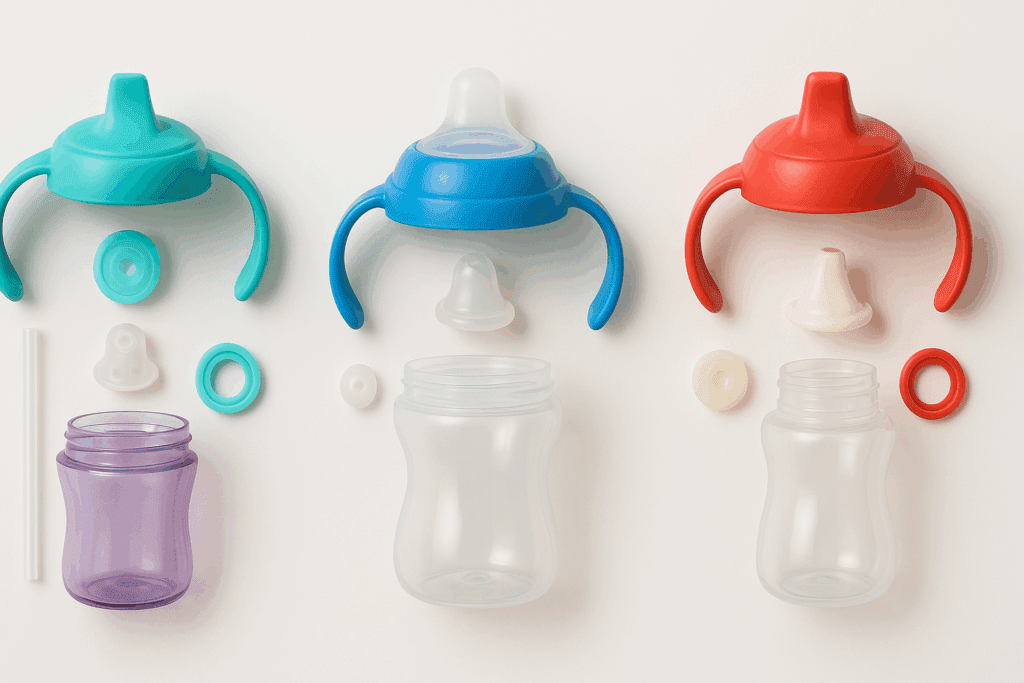
The Anatomy of a Leak Proof Sippy Cup: What Makes It Work
Understanding what truly makes a sippy cup leak proof involves delving into its design and mechanics. Unlike traditional cups, which rely solely on an open rim, a leak proof sippy cup employs various valves, seals, and pressure-release technologies to ensure that liquid only flows when a child actively sucks or tilts the cup. These systems often include silicone or rubber components that create a tight seal around the spout or straw, thereby preventing accidental spills even if the cup is dropped or shaken. This not only protects household surfaces and clothing from damage but also reduces stress for parents and caregivers.
The spout design is another crucial aspect. Hard spouts are more durable and resistant to chewing but may not be as gentle on developing gums. In contrast, soft spouts are better suited for younger children but may wear down faster. Additionally, cups with built-in straws often come with flip-top covers that help maintain hygiene while also enhancing spill resistance. Many modern designs also feature flow control technology that regulates the speed of liquid release, catering to the diverse needs of children at different developmental stages. All these features work in harmony to make the no leak sippy cup not just functional, but indispensable for modern parenting.
How a No Spill Sippy Cup Supports Healthy Hydration Habits
Hydration plays a fundamental role in everything from cellular function to temperature regulation in young children. Unfortunately, many children are not drinking enough water daily, especially when distractions like sugary juices or flavored beverages are more appealing. A non spill sippy cup can subtly reinforce healthier beverage habits by providing a consistent and easy-to-use source for water and milk, which are the two most recommended fluids for children under five. By offering fluids in a cup that is convenient and spill resistant, children are more likely to sip throughout the day without supervision or reminders.
Furthermore, using a spill proof sippy cup can create positive reinforcement loops. Children who don’t experience negative outcomes like wet clothes or scolding for spills are more inclined to continue drinking independently. This autonomy not only supports their confidence but also promotes mindfulness around thirst and fluid intake. When parents ensure that the child has access to their drink at all times in a safe, reliable container, they are laying the groundwork for hydration as a habitual, self-directed behavior. It becomes second nature, akin to reaching for a snack when hungry. This behavioral anchoring is particularly effective during the toddler years, when routines are formed and habits become ingrained.
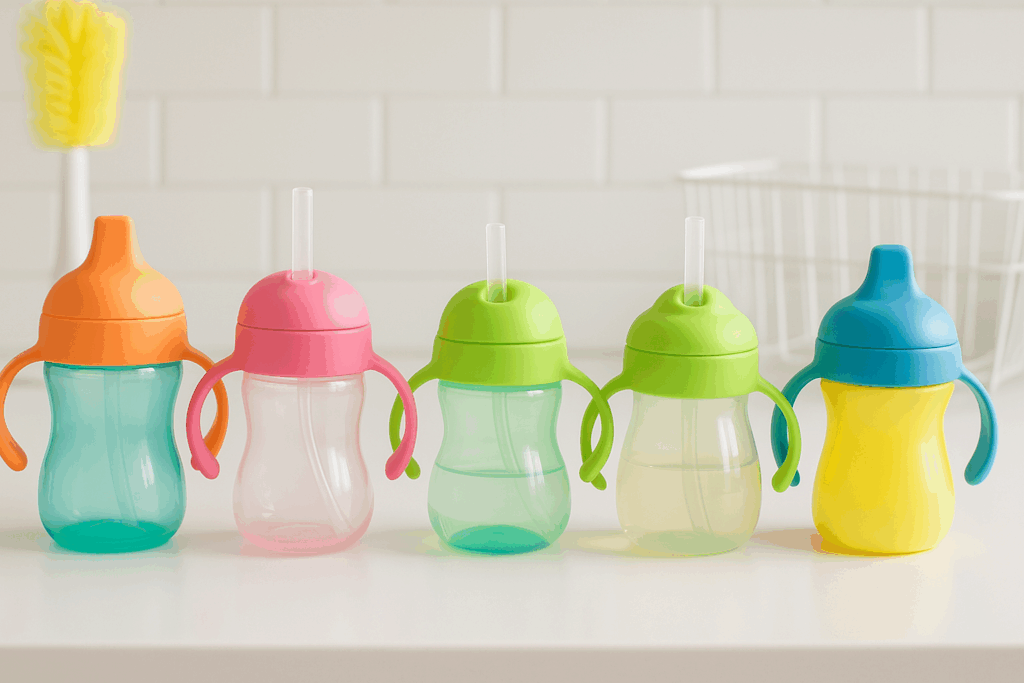
Key Features to Look for in the Best Spill Proof Sippy Cup
Selecting the right sippy cup involves balancing a wide array of considerations, from age-appropriateness to safety certifications. A high-quality no spill cup typically includes BPA-free materials, ensuring that no harmful chemicals leach into the liquid. BPA, or bisphenol-A, is a synthetic compound often found in plastics and has been linked to developmental concerns when consumed in large quantities. Fortunately, many reputable brands have eliminated BPA from their production lines, offering safer alternatives for young children.
Another key feature to prioritize is ease of cleaning. Many parents underestimate how difficult it can be to thoroughly clean sippy cups, particularly those with intricate valve systems or hidden nooks that harbor mold and bacteria. A leak proof sippy cup with removable parts that are dishwasher-safe simplifies maintenance and enhances hygiene. Additionally, the size and shape of the cup should accommodate small hands, with ergonomic grips or handles that support fine motor development. The spout or straw should also be designed to mimic the motion of drinking from a regular cup while offering enough resistance to prevent spills.
Parents should also consider the aesthetic appeal of the cup. While this might seem secondary, children are more likely to use cups that feature their favorite colors, animals, or characters. These subtle design elements can transform hydration from a mundane activity into an engaging, daily routine. Finally, compatibility with cup holders, stroller trays, and lunch boxes should be taken into account to ensure convenience across various settings.
Balancing Functionality and Developmental Readiness
As children grow, their drinking skills evolve, necessitating different types of drinkware at each developmental milestone. A leak proof sippy cup can be a helpful intermediary step between the bottle and an open cup, but it’s crucial not to rely on it indefinitely. Prolonged use, especially of cups with rigid spouts, has been associated with dental concerns such as delayed speech development and improper bite alignment. Pediatric dentists often recommend transitioning from spouted sippy cups to those with straws or open rims as early as 12 to 18 months of age.
The trick lies in selecting a cup that aligns with both the child’s physical capabilities and developmental readiness. For instance, younger toddlers who are still mastering hand-to-mouth coordination may benefit from a non spill sippy cup with two handles and a soft spout. As motor skills and oral strength improve, parents can gradually introduce spill proof cups with straws, which more closely simulate natural drinking motions and support oral muscle development. Eventually, these transitions pave the way for mastering open cups without sacrificing hydration.
Parents should view the leak proof sippy cup as a temporary, though valuable, tool in the broader arc of childhood development. Its primary function is to provide a bridge that supports both independence and safety. By periodically evaluating a child’s readiness for new types of cups and rotating options to challenge their abilities, caregivers can foster adaptability while minimizing reliance on any single drinking method.
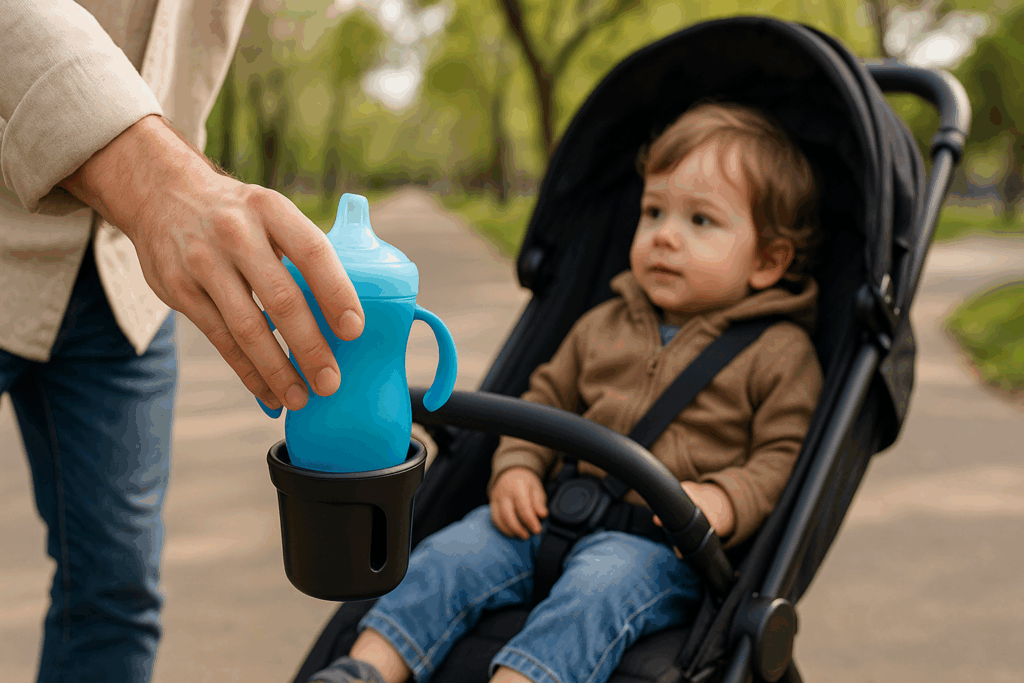
Why Non Spill Cups Are Essential for On-the-Go Families
Modern family life is busier than ever, often requiring children to eat and drink in strollers, car seats, and daycare centers. In such scenarios, a non spill cup becomes more than a convenience—it is a necessity. Spills on car upholstery, daycare cubbies, or diaper bags can be both messy and expensive to clean, making the practicality of spill proof drinkware irrefutable. Moreover, when children are out and about, their risk of dehydration may increase due to physical activity and environmental factors such as heat, making fluid accessibility crucial.
For parents managing tight schedules, having a no spill sippy cup ensures that hydration does not fall by the wayside amid the chaos. Children can drink while on the move, reducing the need for constant adult supervision or cleanup. This fosters a sense of autonomy, enabling young ones to meet their hydration needs in a self-directed manner even in dynamic, unpredictable settings. Furthermore, many spill proof sippy cups come with lids or covers that protect against dust and dirt, enhancing hygiene during outdoor activities.
It is also important to recognize how these cups reduce emotional friction. Toddlers are notorious for their bursts of independence and strong preferences. When a child spills juice on themselves or becomes frustrated with a cup that doesn’t work properly, it can quickly escalate into tantrums or resistance to drinking altogether. A well-designed, non spill sippy cup minimizes these obstacles, making hydration a smoother and more consistent process, both emotionally and practically.
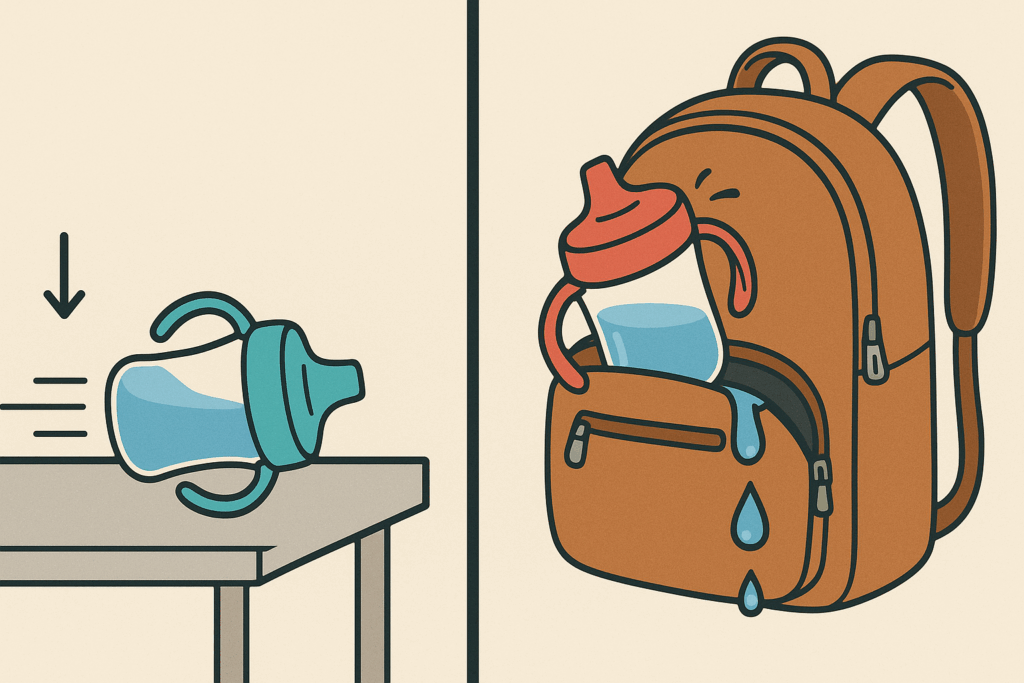
Understanding the Difference Between Spill Proof and Leak Proof Designs
Though often used interchangeably, the terms “spill proof” and “leak proof” carry subtle but meaningful distinctions that can influence purchasing decisions. A spill proof cup generally refers to a design that prevents liquid from escaping even when the cup is tipped or shaken. This is especially useful for toddlers who haven’t yet developed stable motor skills and are prone to knocking things over. On the other hand, a leak proof sippy cup focuses more on preventing fluid from escaping when the cup is stored in bags, diaper organizers, or laid on its side for extended periods.
Understanding this difference can help parents select the right cup for specific situations. For instance, at home, where accidental spills are more likely, a spill proof sippy cup may suffice. However, for travel or daycare use, a truly leak proof option becomes critical to prevent damp backpacks or sticky messes. Some premium sippy cups offer dual protection by incorporating mechanisms that guard against both leaks and spills, often through multi-layered seals and advanced valve systems.
Additionally, it’s worth noting that the effectiveness of these features depends heavily on the condition and assembly of the cup. Wear and tear, misaligned components, or improper cleaning can compromise the integrity of even the most advanced designs. Parents should routinely inspect cups for signs of deterioration and replace parts as needed to maintain functionality. Knowing these nuances empowers families to use each type of cup effectively based on its specific strengths and limitations.
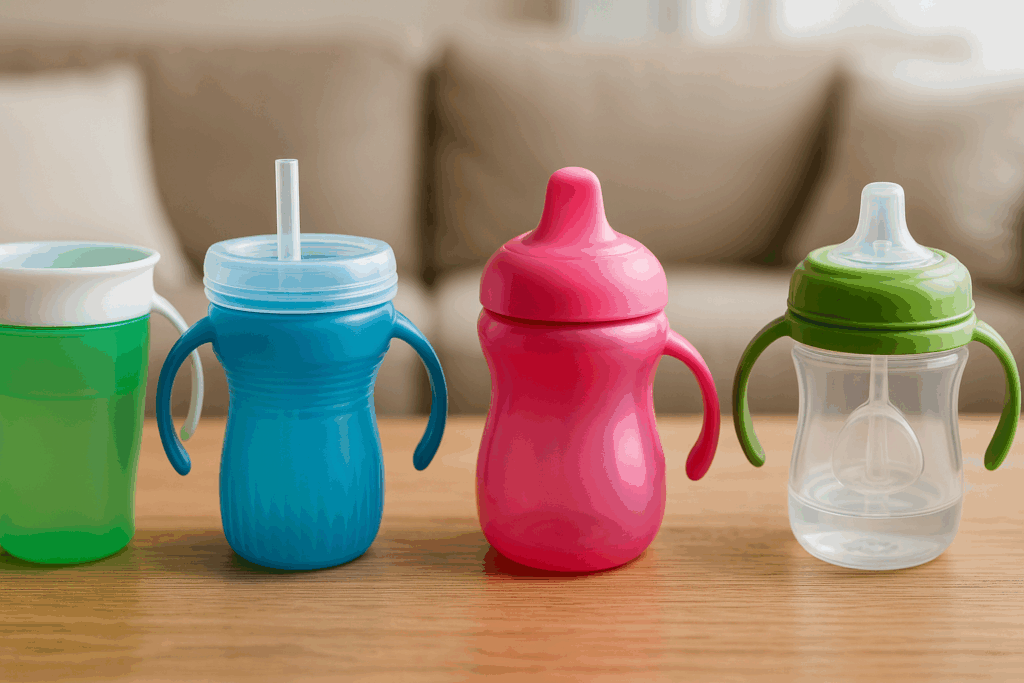
Comparing Popular Brands and Their Leak Proof Technologies
Several manufacturers have distinguished themselves in the realm of spill proof sippy cups, each offering unique technologies and designs. Brands like Munchkin, NUK, Tommee Tippee, and Philips Avent have become household names by prioritizing safety, functionality, and innovation. For example, Munchkin’s Miracle 360 cup eliminates the traditional spout altogether and uses a lip-activated valve that allows drinking from any side of the rim. This not only supports oral development but also offers a high level of spill resistance.
NUK’s Learner Cups feature soft silicone spouts and ergonomic handles, making them ideal for beginners, while Tommee Tippee offers options with antibacterial technology and super-sensitive valves that activate with minimal pressure. Philips Avent’s line includes various styles, from straw-based designs to trainer cups with rotating spouts, catering to children at different developmental stages. Each brand presents a different approach to solving the same problem: how to deliver safe, convenient hydration without the mess.
Parents should assess these offerings based on their child’s unique needs, preferences, and stage of development. While some children may prefer the familiarity of a straw-based design, others might thrive with a rim-activated system. Reviews, user feedback, and pediatrician recommendations can also provide valuable insights into how different models perform over time, especially under the stress of daily use and repeated washing.
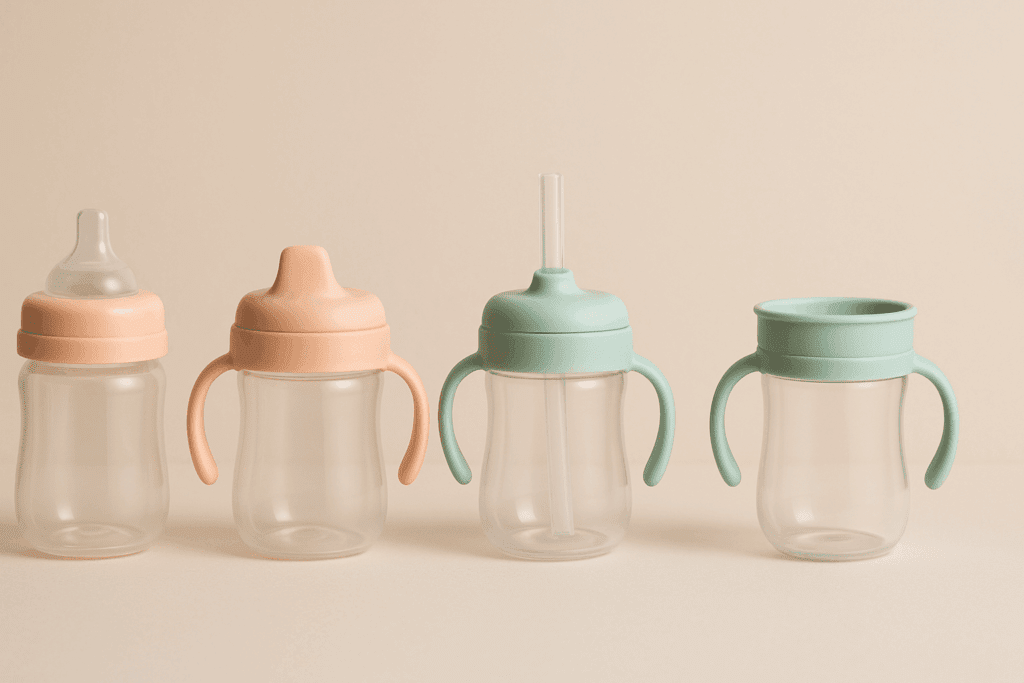
Choosing a Leak Proof Sippy Cup That Grows with Your Child
Investing in a sippy cup that adapts to your child’s evolving needs can save time, money, and effort in the long run. Some manufacturers now offer modular systems that allow caregivers to swap out components as their child grows. A cup that starts with a soft spout for teething babies may later convert to a straw or open-rimmed trainer cup by simply replacing the top. These convertible designs support continuity, reducing the learning curve for each new drinking method.
Such systems are particularly valuable for children who resist change or become attached to specific cups. Instead of introducing a completely new product, parents can make incremental modifications that maintain familiarity while advancing developmental goals. This strategy not only eases transitions but also reinforces hydration habits in a way that feels comfortable and empowering for the child.
Additionally, modular designs can be more environmentally friendly. Instead of discarding entire cups as the child outgrows them, families can retain the base and simply replace spouts, straws, or valves. This reduces plastic waste and supports sustainability—a value that many parents increasingly consider when making consumer choices.
Health and Hygiene Considerations for Daily Use
No matter how advanced a spill proof sippy cup might be, it must be maintained properly to ensure its health benefits are fully realized. Improper cleaning can lead to the buildup of mold, bacteria, and residue, potentially exposing children to harmful pathogens. Daily cleaning with warm, soapy water and periodic sterilization of components is essential. Cups with removable parts should be taken apart completely to access hard-to-reach areas, while dishwasher-safe options should be placed on the top rack to avoid warping.
It’s also important to replace worn or damaged parts promptly. Spouts that show signs of biting, silicone that becomes cloudy, or valves that no longer fit tightly can compromise the leak proof function and introduce contaminants. Keeping a few spare parts on hand or selecting brands with accessible replacement kits can make it easier to maintain cup integrity without constant repurchasing.
Lastly, families should store cups in well-ventilated areas and avoid sealing them immediately after washing to prevent trapped moisture. Allowing cups to dry fully before reassembly significantly reduces the risk of mold growth, ensuring that the leak proof sippy cup continues to support healthy hydration in the most hygienic way possible.
Frequently Asked Questions: Advanced Insights on Choosing the Best Leak Proof Sippy Cup
How can I tell if a leak proof sippy cup is truly safe for long-term use?
Safety in a leak proof sippy cup goes beyond the absence of leaks—it includes the materials used, the durability of parts, and the cup’s impact on developmental milestones. Look for certifications like BPA-free, PVC-free, and phthalate-free, as these confirm the cup is made without toxic plastics that can leach into liquids. Additionally, examine the spout or straw for signs of wear, as damaged components can harbor bacteria or pose choking risks. Some brands also offer antimicrobial technology that prevents microbial growth on the mouthpiece, adding another layer of protection. It’s wise to periodically rotate or replace cups based on manufacturer recommendations, especially if the child uses the cup daily. Over time, even the best no spill sippy cup can degrade, so staying attentive to changes in texture, color, or smell can help maintain safety.
What innovations are emerging in spill proof sippy cup design?
In recent years, the evolution of the spill proof sippy cup has been shaped by both parental feedback and advances in pediatric research. Some new models incorporate smart technology that tracks hydration levels and syncs with a caregiver’s phone to provide reminders. Others include sensory-friendly materials for children with tactile sensitivities, helping to create a more inclusive feeding experience. There’s also a growing emphasis on eco-conscious design, with compostable or fully recyclable components replacing traditional plastics. Additionally, some companies are experimenting with food-grade silicone rims that simulate the natural motion of drinking from an open cup without compromising on spill resistance. These innovations not only enhance usability but also reflect a broader trend toward safer, more personalized feeding tools.
What is the best way to transition from a non spill cup to an open cup?
Transitioning from a non spill cup to an open cup is most effective when approached in stages that respect a child’s developmental readiness. Begin by introducing an open cup during calm, supervised situations like mealtime, while continuing to use the no leak sippy cup for travel or independent drinking. Choose small, lightweight training cups with easy-to-grip handles and consider using just a few sips of liquid initially to reduce the mess from inevitable spills. Over time, increase the frequency and volume offered in the open cup to build confidence and motor control. Remember that regression is normal—some children may prefer returning to their spill proof sippy cup during illness or stress, so flexibility is key to long-term success.
Can a spill proof cup interfere with oral development if used too long?
Yes, prolonged use of a spill proof sippy cup—particularly those with rigid spouts—can contribute to speech delays, dental issues, or improper tongue posture. Pediatric dentists often caution that when the tongue and oral muscles don’t move naturally, the child may develop habits like tongue thrusting or mouth breathing. To avoid this, limit use of rigid-spout cups beyond 18 months and consider switching to cups with straws or 360-degree rims that encourage more natural movement. Parents should also encourage open cup practice during meals, even if it results in minor spills. By offering a variety of drinking options, caregivers can support healthy oral motor development while still benefiting from the convenience of non spill cups when needed.
Is there a difference between a spill proof sippy cup and a no leak sippy cup?
While the terms are often used interchangeably, a spill proof sippy cup typically prevents accidental tipping or shaking from causing messes, whereas a no leak sippy cup is designed to remain sealed even under pressure or when inverted. This distinction matters for specific scenarios: a spill proof cup may suffice for use around the home, but only a truly no leak sippy cup will keep backpacks, diaper bags, or car seats dry during transit. Some models offer dual protection by combining pressure-sensitive valves with tightly fitted lids to achieve both functions. Parents should evaluate when and where the cup will be used most often before deciding which feature is a priority. Additionally, consistent inspection of seals and gaskets is crucial to maintain leak resistance over time.
How does cup design impact a toddler’s willingness to drink water regularly?
A toddler’s willingness to drink water can be heavily influenced by the design of the cup. Cups that feature fun characters, vibrant colors, or interactive elements like buttons or twist lids can create positive associations with hydration. Additionally, a spill proof sippy cup that’s easy to open and hold encourages autonomy, which toddlers naturally crave. Children are also more likely to engage with cups that produce a steady, manageable flow of liquid—if the resistance is too high, they may give up quickly. Some parents find success by offering a selection of cups and letting the child choose their preferred one for the day, creating a sense of ownership and routine. Incorporating ice cubes, fruit infusions, or colorful straws into the non spill cup can also make drinking water more appealing.
What are the social benefits of using a non spill sippy cup in group settings?
In daycare, preschool, or playgroup settings, the non spill sippy cup offers not just practicality but social harmony. These environments often have shared spaces where messes can lead to disputes or stress among caregivers. By using a spill proof sippy, children can independently manage their hydration without disrupting others, encouraging a sense of responsibility and peer respect. Many centers have adopted uniform sippy cup rules to reduce the spread of germs and to streamline cleaning routines. When each child brings a clearly labeled, hygienic, and spill-resistant cup, it also reduces confusion and fosters a sense of personal accountability. This builds early social habits, such as taking care of personal belongings and following communal expectations.
How can I tell when a spill proof sippy cup needs to be replaced?
A spill proof sippy cup doesn’t last forever, and knowing when to replace it can prevent hygiene issues and functional failure. Signs of wear include discoloration, persistent odors, cracking plastic, or a spout that becomes too soft or rigid. If your no spill sippy cup starts leaking despite proper assembly, it could mean the internal valve or gasket is deteriorating. Some cups may also warp from frequent exposure to high dishwasher temperatures, affecting their ability to seal tightly. Keep an eye out for mold growth in hard-to-reach areas, especially under the valve or around the spout, even if you clean the cup daily. Most manufacturers recommend replacing components every few months, and full replacement every six to nine months depending on usage.
How do I choose a spill proof sippy cup for a child with sensory challenges?
Choosing the right spill proof sippy cup for a child with sensory sensitivities requires careful attention to material, texture, and sound. Some children may reject cups that feel too cold, slippery, or noisy when shaken. Opt for cups with silicone exteriors, matte finishes, or soft straws that provide comforting tactile feedback. The flow resistance should also be low enough to avoid frustrating the child, but firm enough to prevent leaks. Non spill cups with minimal visual distractions can help children focus better, while others may benefit from color-coded or patterned options that provide a sense of predictability. Ultimately, trial and error is key—some brands offer sampler packs or modular components, making it easier to customize the cup to a child’s specific needs.
Why does a leak proof sippy cup sometimes still leak after cleaning?
It can be frustrating to find your leak proof sippy cup leaking even after a thorough cleaning. This often happens when components are not reassembled correctly—especially valves, silicone seals, or flip lids that must be seated precisely to function as designed. Soap residue or dried milk can also interfere with valve integrity, causing subtle openings that allow liquid to escape. If a cup is consistently leaking despite being new and properly cleaned, the issue may stem from manufacturing tolerances that don’t align well with repeated use. Additionally, certain liquids—like carbonated water or pulpy juices—can increase internal pressure and overwhelm the cup’s sealing mechanism. To prevent post-clean leaks, allow all parts to fully dry before reassembly and double-check each connection point before use. Testing the cup with water over a sink before handing it to a child can also help catch problems early.
Tips for Optimizing Travel Use of a Leak Proof Sippy Cup
For families on the go, optimizing a leak proof sippy cup for travel involves more than just choosing a sealed design. Consider selecting models with secure travel lids or lockable spouts to prevent leaks due to air pressure changes during flights or bumpy car rides. Store the cup upright in an insulated holder to maintain temperature and further reduce movement-related pressure. Avoid overfilling the cup before travel—leave room for liquid expansion that can push against seals and force leaks. It’s also helpful to carry spare parts in a labeled pouch, including replacement valves and a small cleaning brush for on-the-go hygiene. Pre-packing the non spill cup with water the night before and storing it in the fridge can streamline morning routines and ensure hydration stays front of mind during travel days.
Conclusion: Making Smart, Healthy Choices with the Right Leak Proof Sippy Cup
In the landscape of child development, hydration may seem like a simple checkbox on a long list of parental responsibilities. However, it is a foundational element that supports virtually every system in a growing body. Choosing the right leak proof sippy cup transforms this daily necessity into an opportunity—one that promotes independence, nurtures healthy habits, and simplifies life for busy families. The best spill proof sippy cup is more than a container; it is a thoughtfully engineered tool that bridges developmental milestones with practical, everyday usability.
By understanding the mechanics of no spill sippy cup technology, recognizing the importance of age-appropriate designs, and emphasizing hygiene and maintenance, caregivers can confidently select products that align with both immediate and long-term health goals. From early toddlerhood to the brink of kindergarten, the right cup can foster a positive relationship with hydration, reduce stress, and contribute to a child’s overall nutritional success. As families navigate the wide array of choices available, prioritizing safety, functionality, and adaptability ensures that the selected drinkware supports not just the moment, but the milestones ahead. In doing so, the leak proof sippy cup becomes a symbol of nurturing, growth, and the essential role of healthy hydration in a child’s life.
Further Reading:
The Ultimate Guide on Choosing the Perfect Spout Sipper Cup for Your Baby
The Best Sippy Cups for Babies and Toddlers Transitioning From Bottle or Breast


